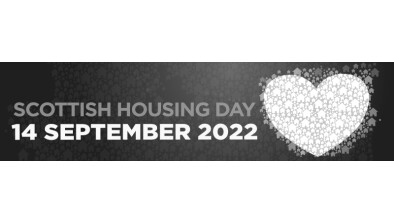Blog: New fire safety guidance an opportunity to raise awareness

With the Scottish Government set to produce refreshed guidance on fire safety for providers of certain types of accommodation, CIH Scotland spoke to Susanne Flynn in its policy and practice team to find out what it means and who should take note.
What is the new guidance, who does it apply to and why has it come about?
The guidance will bring together three existing fire safety guides into one coherent document.
It doesn’t apply to housing associations or councils (there is separate guidance and obligations for these providers) but it does cover a significant number of people providing accommodation in existing residential premises, including:
Post-Grenfell, this is a welcome chance for the Scottish Government to make sure it is doing everything it can to simplify and clarify its guidance for these landlords.
Clearly there is still concern among both landlords and the people who use this sort of accommodation and this is an opportunity to make sure everyone understands the guidance and to allay some of those fears.
Is there anything new about the guidance?
This is more about refreshing, consolidating and simplifying existing guidance than it is anything new. The one significant difference is that for the first time the government recognises what it calls ‘peer to peer’ accommodation – that means people who rent their accommodation via Airbnb or similar providers. These providers were covered by the existing guidance but they are now mentioned specifically for the first time for the sake of clarity.
What is the significance of the new guidance?
Though on the face of it this may seem like not much is changing, this will be an important opportunity for all relevant landlords to familiarise themselves with the guidance and to make sure they are doing everything they can. We know that landlords will want to do exactly that but it’s important that we do all we can to promote the new guidance otherwise there’s a risk that it comes out and people don’t realise it’s there.
We recently submitted our consultation response on the guidance, what did we say?
Broadly we really welcome this refreshed guidance but we do have a couple of concerns.
First of all we’re really not sure about the use of ‘peer to peer’ to describe the people who offer accommodation through the likes of Airbnb. We think there must be a better way to describe this to make sure that the landlords that come under that banner understand that it refers to them.
Also, the number of landlords who would come under that category has expanded significantly in recent years and we’re not sure that everybody understands that the guidance applies to them. So we’d like to see this used as an opportunity to perhaps run a campaign to reach those landlords to help them understand the guidance and in turn to raise awareness of fire safety among the many people using that sort of accommodation.
What is the timetable for the release of the guidance?
The consultation period closed this week and we expect the finished guidance will be published soon. We will be helping to publicise it when it is released to help this new guidance reach as wide an audience as possible.
The full consultation document is available here
CIH Scotland’s submission is also available here
This blog was originally posted on the CIH Scotland website.








